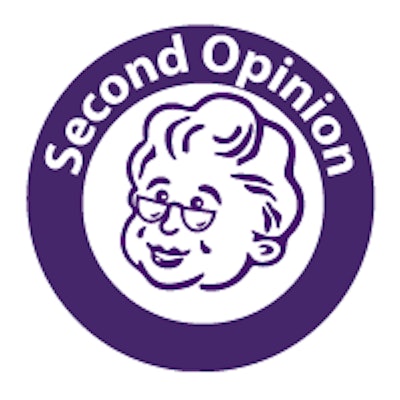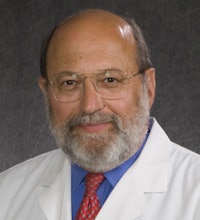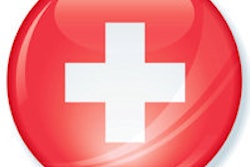
In this Second Opinion article, Dr. Daniel Kopans offers his perspective on the rising number of research studies with negative findings on screening mammography.
It is now clear that there is a coordinated effort to deny women access to mammography screening. Almost every week there is a "coincidental" attack on mammography screening that appears in either Annals of Internal Medicine, New England Journal of Medicine (NEJM), Journal of the American Medical Association (JAMA), or BMJ.
One has to ask how there is such a concentration of arguments against screening, yet, to the uninformed, there seem to be no arguments being published in support of screening (they are actually being published in journals not carefully covered by the media).
 Dr. Daniel Kopans from Massachusetts General Hospital.
Dr. Daniel Kopans from Massachusetts General Hospital.
The answer is related to what I believe are unethical practices at these journals, which have refused to publish the scientific evidence that shows that mammography screening is the main reason that deaths from breast cancer have declined dramatically since 1990 following the introduction of screening at a national level in the mid-1980s. Therapy has improved, but therapy saves lives when breast cancers are treated earlier.
The most recent, scientifically unsupportable analysis1 in the New England Journal of Medicine (a journal that has consistently published only papers that oppose access to screening) summarizes all the misinformation that has been published. Even the title of the paper is misleading, stating that it is a report from the "Swiss Medical Board," making it sound official. It is not until the end of the paper that the authors reveal that this "board" is "nongovernmental," and its recommendations are not legally binding.
This article, in a major U.S. journal, is coming from a self-appointed group that a less than careful reading might be interpreted as reflecting health policy in Switzerland when it does not. It is remarkable that all the arguments against screening are repeated by this group despite the fact that they have no scientific basis.
This most recent propaganda points to the 25-year follow-up of the Canadian National Breast Screening Study published in BMJ.2 Ignoring the facts, the authors state, "The recently published extended follow-up of the Canadian National Breast Screening Study is likely to provide reliable estimates of the extent of overdiagnosis."
In fact, the Canadian trial was shown in the 1990s to be completely "unreliable." It has been completely discredited from a scientific perspective, yet the authors, who claim to be experts, ignore the fact that the mammography was "poor to unacceptable"3,4 and the allocation of women to receive mammography or not was corrupted by advanced knowledge of which women had palpable cancers and which women had incurable cancers,5 and assigning them in greater numbers on open lists (unblinded) to be in the mammography arm of the trial.6,7 The continued emphasis on the corrupted results of the Canadian trial, given the numerous publications exposing the compromises, can only be seen as a malicious attempt to ignore scientific evidence.
The coordination among several of the highly visible journals is clear. First, in 2007, the Annals of Internal Medicine published mammography screening guidelines from the American College of Physicians (ACP) that dropped support for screening women ages 40-49 even though the ACP admitted that the most lives are saved by screening women annually beginning at the age of 40.8
This was followed in 2009 by the U.S. Preventive Services Task Force (USPSTF), which simply copied the ACP guidelines despite the fact that the models that it used clearly showed what actual data have shown -- that the most lives are saved by screening annually beginning at the age of 40.9
Scientific criticism of the USPSTF (whose panel did not include anyone who cared for women with breast cancer and no experts in screening10) was ignored by NEJM, which dismissed expert concerns as merely vested interests,11 while the Annals of Internal Medicine also ignored all the scientific concerns dismissing them as "Anecdote, Politics, and Emotion."12
The NEJM subsequently published an article that purportedly showed that screening in Norway had little effect on the breast cancer death rate,13 when, in fact, the authors had only 2.2 years of follow-up, which is far too soon to expect a decline in deaths. Furthermore, the authors made the misleading statement that there was very little screening going on before the Norwegian national program began.
In fact, it appears that more than 40% of women in Norway were being screened before the program began, so the decline in deaths due to screening began before the start of the national program, and there had actually been a marked decline in cancer deaths in Norway due to screening.14
NEJM then published an article by Bleyer and Welch claiming mammography was leading to massive overdiagnosis of breast cancer.15 This was coordinated with an op-ed piece in the New York Times,16 which has also had a longstanding bias against mammography screening. It was subsequently shown that since Bleyer and Welch had no idea which women were being screened, and which cancers were being found by mammography, they could not legitimately blame mammography. Few know that Bleyer subsequently admitted that they actually had no data to implicate mammography.17
Even more distressing is the fact that Bleyer and Welch's claim of overdiagnosis, which is being cited as the major reason to reduce or end access to screening, was based on "guesses" and, in fact, the guesses were incorrect.17 In fact, the scientific evidence suggests that there is little if any overdiagnosis of invasive cancers.17 It is a major scandal that self-appointed "experts" who admitted "guessing" would dictate guidelines and that physicians would allow "guesses" to dictate advice to women.
More misinformation?
The coordination of misinformation continued with the publication of an article by Welch and Passow in JAMA claiming little benefit from screening and reinforcing the misinformation about overdiagnosis,17 which was also coordinated with the New York Times.18
Soon after, BMJ published the 25-year follow-up of the Canadian National Breast Screening Study. Articles in Annals of Internal Medicine reinforced the idea that access to screening should be reduced, one of which was written by an individual who has been trying to reduce access to screening for more than 20 years.19
This was followed by another article in April 2014 in JAMA by Pace and Keating20 that was promoted as a massive, objective review of the screening data, but instead relied on the Welch and Passow paper published a few months earlier and, somehow, also provided data from the 25-year follow-up of the Canadian study, claiming it had been published in January when, in fact, it had not been published until a month later in February, suggesting collusion between JAMA and BMJ.
It is an interesting "coincidence" that the editor of the Annals of Internal Medicine, the editor of BMJ, and an editor from JAMA are all on the advisory board of the Nordic Cochrane Center.21 The head of the Nordic center is a crusader whose goal is to end all screening mammography.22
It is outrageous that the April 16 paper, again published by NEJM (Dr. Nikola Biller-Andorno is at Harvard University as a Harkness fellow) cites the "Cochrane Review" as support for its contentions when the director of this organization has declared his opposition to screening and ignored the fact that numerous experts have directly criticized his faulty methodologies.23,24,25,26,27
What's at stake
It is interesting that a group from Switzerland that is trying to limit screening in that country would be so interested in data from the U.S. and would criticize perceptions among American women.
To state "mammography screening might prevent about one death attributed to breast cancer for every 1,000 women screened, even though there was no evidence to suggest that overall mortality was affected" is meant to trivialize the problem. The authors use the same logic as was used by Welch and Passow, of "absolute benefit," that opponents of screening have used for decades.
Since only 3% of women who die each year in the U.S. die from breast cancer, a reduction of 30% (what the data actually show) means only 1% of total deaths will be averted. It is unlikely that screening trials could prove a 1% decline in ALL deaths, so their statement is merely meant to mislead. What is at stake, however, is 15,000 to 20,000 lives each year. By the same logic, seatbelts only save 1 life in 25,000 each year so why bother?
Enough is enough. Women and their physicians need to understand that there is a coordinated effort to reduce access to screening that has been built on pseudoscientific "evidence" that is now repeated as if it is factual. Physicians need to stand up for science and facts when there are forces that would use corrupted trial data and unsupportable guesses to deny women access to a proven lifesaving intervention.
Everyone agrees that we need a universal cure, or a safe way to prevent breast cancer, but none is on the horizon. No one is suggesting that mammography screening is the ultimate answer to breast cancer. It does not find all breast cancers and does not lead to a cure for all breast cancers. But the scientific evidence clearly shows that screening leads to a major decline in breast cancer deaths.
Therapy saves lives when cancers are treated earlier. It is time for the deception to cease. It is unconscionable to deny women access to a proven screening test based on the scientifically unsupportable misinformation that has been allowed to be published, unopposed, in previously reputable journals.
We are trying to find ways to save more lives, but as the death rate from breast cancer continues to decline, it is unconscionable to withdraw access to screening based on nonscience.
Dr. Kopans is a professor of radiology at Harvard Medical School and senior radiologist in the department of radiology, breast imaging division, at Massachusetts General Hospital in Boston.
The comments and observations expressed herein do not necessarily reflect the opinions of AuntMinnie.com, nor should they be construed as an endorsement or admonishment of any particular vendor, analyst, industry consultant, or consulting group.
References
For a complete list of refences, click here.


















